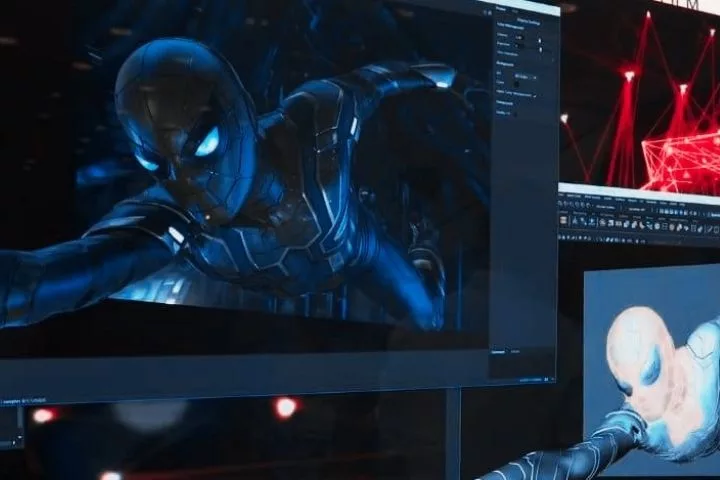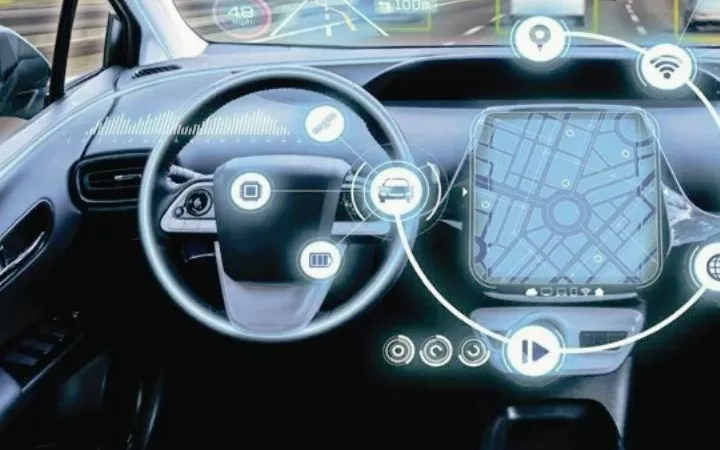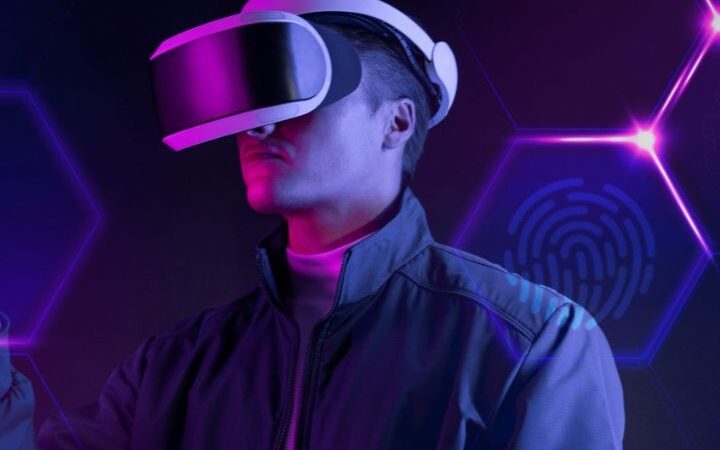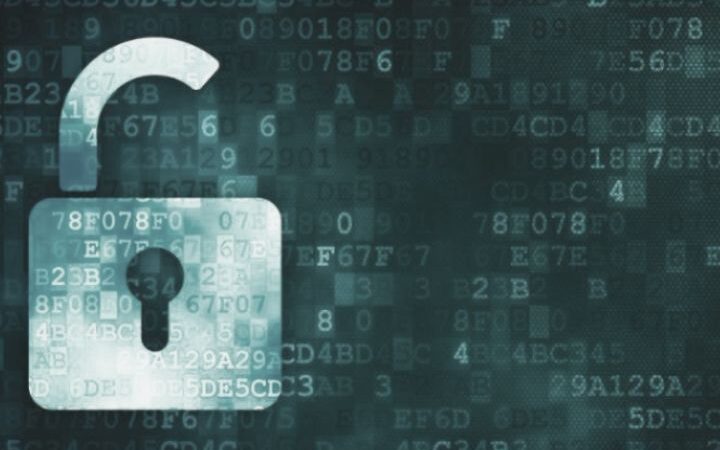What Is Ray Tracing: Definition And Meaning For Gaming

Since manufacturer N.V.I.D.I.A. announced the Turing series in 2018, the term “ray tracing” has been on everyone’s lips. This rendering method was considered unattainable for a long time. Still, with the current best graphics cards from the GeForce R.T.X. series, you can already see this technology in action in the latest P.C. games.
Ray tracing is possibly one of the most significant graphics upgrades we’ve seen in the gaming landscape in years. Or at least as soon as we know that it’s implemented in more recent P.C. games.
This article explains what ray tracing is, how it works, and why it is excellent for gaming.
What exactly is ray tracing?
Well, what is this omnipotent technical achievement?
Raytracing is a new and far more realistic way to render light and shade than the previously common in Games screening technology ( English: “rasterization”). Well, at least partially new.
Even if this technology is currently experiencing a media boom, especially in the gaming sector – the whole thing is by no means new. Because the technology has been used in the film industry for several decades, animated films such as “Toy Story” (1995), “Die Monster AG” (2001), or “Finding Nemo” (2003) already rely on ray tracing.
But why did so much time pass before the gaming scene dared to tackle the topic?
The big difference between film and gaming here is the time factor. Theoretically, one can take forever to render a frame (single image) in animated films. Or at least until the producers run out of budget.
A “retracted” scene from the N.V.I.D.I.A. demo
It’s a little different with video games. Because in (non-scripted) games, the course and game environment changes suddenly and uniquely. In fact, with every frame. Because here real-time calculation has to be done, which makes the simulation much more complex and, above all, more resource-intensive.
But how exactly does this miracle technique work? In principle, all you have to do is observe the light in the real world and follow its path.
How does ray tracing work?
In principle, ray tracing is nothing more than the name suggests. The light – and by this means all light rays (“rays “) that constantly shoot through the air – is “tracked” along its path (“tracing”).
However, sooner or later, these photons (light particles) hit various objects. For example, a wall, a glass, or a mirror. But they don’t just hit, and that’s it. No, on the contrary: the photons change their properties every time they hit them. The color, the angle, and the strength of the reflection play a role here.
Does it all sound so complicated? But it is not at all: If a beam of light hits the green glass, for example, the wall behind it will also turn green – for us, this is so normal that we hardly think about it.
However, this light has traveled nearly 150 million km to perish as a stain of color on your wall, just like all the light that surrounds us.
So we have found that light not only absorbs the colors but all the properties of the environment. The light enters through the window, hits the wall, a mirror, and finally, your retina.
What we perceive as completely usual is, in reality, an almost infinite number of photons that have changed on their long way every time they come into contact with an object.Ray tracing perfects the representation of light, shadow, and reflections
Ray tracing tries to simulate this process and works much the same, except that, in general, everything moves in the opposite direction. The light generated with ray tracing starts with the viewer (mainly from the camera lens) and moves outwards in the software.
A path that jumps over several objects and sometimes even takes on their color and reflective properties is recorded. The process continues until the software has determined the appropriate light source (or sources) that would affect that particular beam.
What does all of this have to do with more realistic puddles in Battlefield?
Ray tracing starts with the behavior of light in the natural environment. The only difference between reality and a virtual image as realistic as possible in a game is the computation required. Because your graphics card calculates and simulates a completely individual image for each frame in real-time – in just 16 milliseconds (at 60 F.P.S.). Depending on the light, depending on the changes in the environment – pretty awesome, isn’t it?
What effects does ray tracing have on gaming?
Newer games already support ray tracing, even if the number has so far been relatively modest (more on this below). But here, the community and developers are specific: Ray tracing will become increasingly important.
It is no different in the console area either. Sony and Microsoft have already announced that the PS5 and Xbox X series will use this groundbreaking new feature. However, very few of the console gamers are likely to have heard of ray tracing so far.
The qualitative differences, particularly evident in the significantly more realistic reflections, light and shadow representations, are enormous. You can see this most clearly on reflective surfaces such as puddles, mirrors, or windows.
The best way to see the effects of the new feature on the gaming world is to make a direct comparison.
Which graphics cards support ray tracing?
When Nvidia first announced ray tracing, few cards supported this new feature. Namely only the RTX 20s series ( RTX 2060 (Super) , RTX 2070 (Super) , RTX 2080 and 2080Ti ).
However, it was later announced that previous models would also be fit for ray tracing with new drivers. Even if only to a limited extent. Nvidia only specifies “simple R.T. effects” and a “small number of rays” for the following graphics cards:
- GeForce GTX 1660 Ti
- GeForce GTX 1660
- Nvidia Titan X
- Nvidia Titan XP
- Nvidia Titan V
- GeForce GTX 1080 Ti
- GeForce GTX 1080
- GeForce GTX 1070 Ti
- GeForce GTX 1070
- GeForce GTX 1060 6GB
This is good news for anyone who has already installed one of the above cards. However, it must be added that there are significant differences in performance between the new and older models:
At maximum settings, even the latest graphics cards find it challenging to provide stable gaming fun with more than 60 F.P.S.
When looking at the benchmark, one or the other of you may be surprised. The R.T.X. 2070 does significantly better than the GTX 1080 Ti. In a direct performance comparison of the two cards, however, it is precisely the opposite.
Why is that? Quite simply: Although the raw performance of some predecessors is significantly better than that of the new R.T.X. models, the latter have been optimized for ray tracing. Accordingly, the R.T.X. 2070 has a clear lead here when playing with ray tracing switched on.
Which graphics cards support ray tracing?
When Nvidia first announced ray tracing, few cards supported this new feature. Namely only the RTX 20s series ( RTX 2060 (Super) , RTX 2070 (Super) , RTX 2080 and 2080Ti ).
However, it was later announced that previous models would also be fit for ray tracing with new drivers. Even if only to a limited extent. Nvidia only specifies “simple R.T. effects” and a “small number of rays” for the following graphics cards:
- GeForce GTX 1660 Ti
- GeForce GTX 1660
- Nvidia Titan X
- Nvidia Titan XP
- Nvidia Titan V
- GeForce GTX 1080 Ti
- GeForce GTX 1080
- GeForce GTX 1070 Ti
- GeForce GTX 1070
- GeForce GTX 1060 6GB
This is good news for anyone who has already installed one of the above cards. However, it must be added that there are significant differences in performance between the new and older models:
At maximum settings, even the latest graphics cards find it challenging to provide stable gaming fun with more than 60 F.P.S.
When looking at the benchmark, one or the other of you may be surprised. The R.T.X. 2070 does significantly better than the GTX 1080 Ti. In a direct performance comparison of the two cards, however, it is precisely the opposite.
Why is that? Quite simply: Although the raw performance of some predecessors is significantly better than that of the new R.T.X. models, the latter have been optimized for ray tracing. Accordingly, the R.T.X. 2070 has a clear lead here when playing with ray tracing switched on.
Good to know
While an R.T.X. 2080 and GTX 1080 Ti are roughly comparable in terms of raw performance for non-ray traced gaming, when ray tracing is applied to a scene, it can take much longer for a 1080 Ti to produce the same image without the dedicated R.T. cores. The newer Turing series is optimized for ray tracing and performs better.
As is easy to see in the benchmark, it will probably take a while before software, and standard hardware is coordinated so that ray tracing is considered the standard in the gaming industry.
Which games currently support ray tracing?
So far, the selection of games that support R.T. is still quite manageable, but that will change shortly. New games, in particular, rely on R.T. during development, and many older titles now shine through mods with R.T. in unprecedented quality. In the following listing, we refer to the current list from Kitguru :
- Atomic Heart
- Battlefield V
- Boundary
- Call of Duty: Modern Warfare (2019)
- Control
- Convallaria
- Cyberpunk 2077
- Deliver Us The Moon: Fortuna
- DOOM Eternal
- Dying Light 2
- Enlisted
- F.I.S.T.
- Justice
- JX3
- MechWarrior 5: Mercenaries
- Metro Exodus
- Minecraft
Project D.H.
- Project X
- Quake II
- Ring of Elysium
- Shadow of the Tomb Raider
- SYNCED: Off-Planet
- Vampire: The Masquerade – Bloodlines 2
- Watch Dogs Legion
- Wolfenstein: Youngblood
- Xuan-Yuan Sword VII
Of course, new titles are constantly being added, and we can look forward to more raytracing support in the future.
What are the advantages and disadvantages of the technology?
Now you know where it all comes from and how the technology works, but what exactly does it bring for the gamer? Where are the most significant differences when you turn on R.T.X.? And is it worth investing in a new graphics card? You can decide for yourself after the following section.
light
Ray tracing offers the most significant added value in the area of the light display. And so this feature pretties up all the factors that are related to it. Since the path of light is modeled on the real world, scenarios in games appear softer, more appealing in terms of color, and, all in all, significantly more realistic.
Reflexion
As you now know, the great benefit of ray tracing lies in “tracking” light rays. In other words, the exact real-time representation of the behavior of light. And as mentioned at the beginning, every beam of light hits a more (mirror) or less (black wall) highly reflective object sooner or later.
So far, reflections have been shown with a so-called “Environment Map” (technology for simulating and rendering reflective surfaces). This is at least an approximately good solution for all objects that are far away. The problems always arise when nearby objects are reflected.
Here, countermeasures were taken using “Dynamic Cube Maps” (technology for imitating reflections using virtual cubes), which significantly increases the graphics card’s utilization. Ray tracing renders (even near) thoughts without any detours or additional tricks.
Battlefield V: Left without and right with activated R.T.X. The reflections of the explosion on the car and in the puddle are most noticeable.
Shadow representation
Up until now, shadows were created using the technique of “shadow mapping” (a method for displaying shades based on the fixed light position), which is familiar with “rasterization.” However, this procedure brought with it problems: the unpopular “aliasing” (unwanted patterns, often with edges or curves) and relatively high utilization of the VRAM. Here ray tracing offers an elegant solution without wasting complex algorithms and additional memory by real-time calculation of light and shadow with the object.
transparency
Another great advantage can be seen in the display of different levels of transparency. So far, the rendering order has played a significant role in the calculation. The polygons, therefore, first had to be sorted according to their distance from the viewer to be rendered afterward. This is resource-intensive and does not rule out errors.
But here, too, there is a much more elegant solution. Do you come up with it? Right. Ray tracing!
Roundings
Last but not least, we should also talk about rounding. Natural curves.
Wrong choice of words?
Sorry, we mean more natural-looking curvatures on surfaces in the game environment!
Where previously a triangular grid had to be created with “tessellation” (used to create a 3-dimensional object from a large number of polygons), the theoretical distance from the observer to any desired point on the curved surface can now be mathematically calculated and simulated.
Hardware hunger
As mentioned briefly above, ray tracing is very resource-intensive. The drawbacks of ray tracing are its speed and performance in games when used in real-time.
A game with ray tracing enabled requires a lot more power to render scenes. Therefore, your in-game F.P.S. (Frames Per Second) can decrease significantly when ray tracing is activated.
Ray tracers are still relatively slow today, and hardware plays a massive role in rendering speed. Some ray tracers still run in series rather than in parallel, making a faster CPU all the more important. Accordingly, not only your graphics card but also your CPU is tortured. So if you don’t have the appropriate robust hardware, you won’t be able to use ray tracing.
Conclusion: is it worth it?
The only question left now is: Is ray tracing just an artificially pushed trend to be able to charge even more money for the already overpriced graphics cards? Or has the gaming industry made a quantum leap in terms of graphical reality?
Since raytracing is still in its infancy in gaming, it is difficult to say when the feature will become the standard. Nevertheless, we strongly assume that sooner or later, ray tracing will become indispensable, as has already happened in the film industry.
Because the visual differences are just as noticeable as the weight loss in your wallet if you want to fully enjoy ray tracing.






